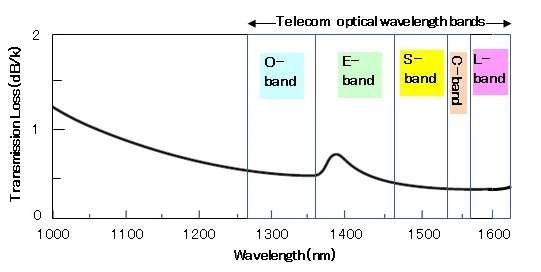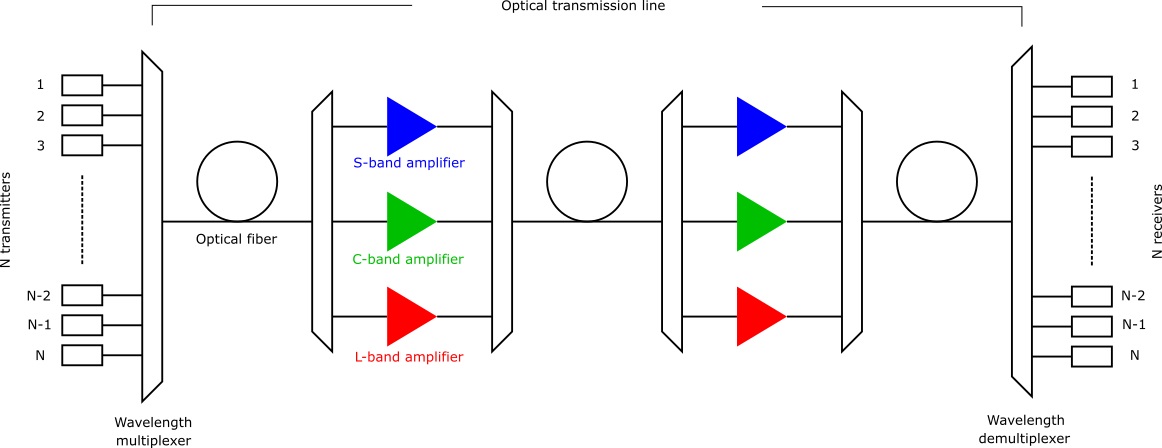JAPANESE / ENGLISH

JAPANESE / ENGLISH
Last updated on 03/8/2023
The Short-wavelength band (S-band) is one of the optical communication bands, that covers the wavelength range of 1460 to 1530 nm.

Figure 1: Wavelength range of S-band in optical communication.
The S-band has been traditionally used for Passive-Optical Network (PON). Both G-PON (ITU-T G.984.5 Gigabit PON) and E-PON (IEEE 802.3 Ethernet PON) use 1490 nm for downstream data transmission.
The S-band can be used for WDM transmission to increase transmission capacity by increasing the number of channels.
CWDM transmission is generally a point-to-point unrepeatered (i.e. no optical amplifiers) system. S-band optical transceivers are widely available in various form factors (SFP, XFP, SFP+, SFP28) bit rates (1G, 10G, and 25G), allowing maximum transmission distance up to 120 km.
The use of S-band for long-haul repeatered (i.e with optical amplifier) DWDM transmission, in addition to the C-band and L-band, is technically feasible. This is because the S-band meets the following three requirements.
A schematic of DWDM system, in which the S-band is used in addition to the C- and L-band, is shown in Figure 2. Signals from N transmitters are multiplexed by wavelength multiplexer and are launched to the fiber. When amplification is needed, the signals are de-multiplexed to the S-, C-, and L-bands and amplified by three amplifiers; typically TDFA for the S-band and EDFAs for the C- and L-bands. After amplification, these three bands are multiplexed again and launched to the next fiber section. At the receiver, signals are de-multiplexed to individual channels and detected.

Figure 2: Schematic of DWDM transmission system using the S-band.
Such transmission scheme is referred to as “S+C+L-band WDM transmission”, and much attention has been paid on this scheme at R&D level . It is promising technology for upgrading existing optical fiber network as it does not require new fiber cable deployment.
FiberLabs offers the following products related to this article. Please visit these pages if you are interested in this article.
| S-band | S+C+L-band | Full-band | |
|---|---|---|---|
| Fiber amplifier | Bench-top Rack-mount OEM Module | 8-λ CWDM (rack-mount) Unidirectional | N/A |
| ASE source | Bench-top OEM module | Bench-top | N/A |
| SLD source | Bench-top OEM module | Bench-top | Bench-top |
| LD source | Bench-top (Fabry-Perot) Bench-top (DFB) Bench-top (FBG-stabilized) | N/A | N/A |
| Tunable filter | Bench-top | N/A | N/A |